Gochujang Stir Fry Vegetables are a vibrant and flavorful dish that brings a delightful kick to your table. Combining fresh, colorful vegetables with the rich, spicy-sweet notes of gochujang, this stir fry is both satisfying and nutritious, as well as quick to prepare and bursting with flavor.
For other spicy Korean recipes, try my easy gochujang eggs and my creamy gochujang pasta.

Jump to:
✔️ Why This Recipe is Great
Quick Go-To Recipe: Whether you're looking for a quick and easy weekday dinner or a delicious weekend brunch option, these gochujang stir fry vegetables will quickly become a staple in your kitchen.
Easy Korean Side Dish: One thing I'm always looking for is new Korean-inspired sides to add to my favorites list! These gochujang stir fry vegetables are crunchy, savory, salty, and satisfying, whether you have gochujang on hand or not.
🥕 Ingredients
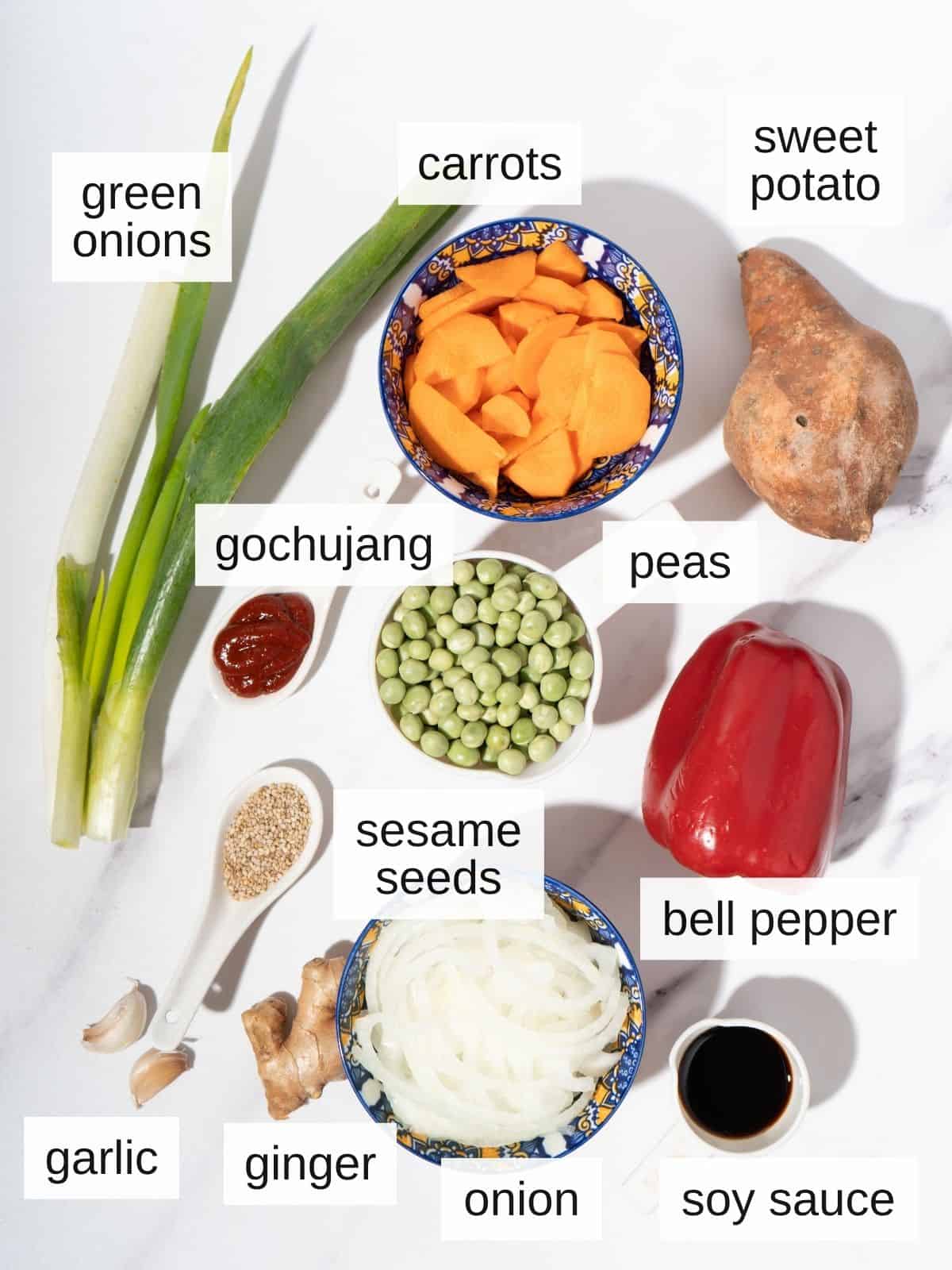
Sesame Oil: a common ingredient in savory Korean recipes, sesame oil adds a nutty and rich flavor to the dish, though you can leave it out if needed.
Vegetables: you can use a mix of different vegetables that you like, but here I use onion, green peas, green onion, bell peppers, carrot, and sweet potato, though you can use whatever blend you like.
Garlic: fresh garlic is a must for this recipe; it adds a pungent and aromatic flavor to the dish.
Fresh Ginger: this bright component adds much more than just flavor to the dish; it's also a healthy addition to ay stir fry.
Gochujang (Korean Red Chili Paste): this fermented chili paste is the heart and soul of Korean cuisine. It adds a spicy, sweet, and savory flavor to the dish.
Soy Sauce: this ingredient adds a salty and umami flavor to the dish, balancing out the sweetness of the gochujang.
Sesame Seeds: this is a garnish, but adds a nice crunch.
See recipe card for exact ingredients and quantities.
🥕 How to Make Gochujang Stir Fry Vegetables (Step-by-Step)
Step 1) In a large skillet or wok, heat the sesame oil over medium heat. Once hot, add the diced sweet potato and sauté for about 5 minutes, until it starts to soften.
Step 2) Add the sliced onion and continue to cook for another 3 minutes, stirring occasionally, until the onion becomes translucent (image 1).
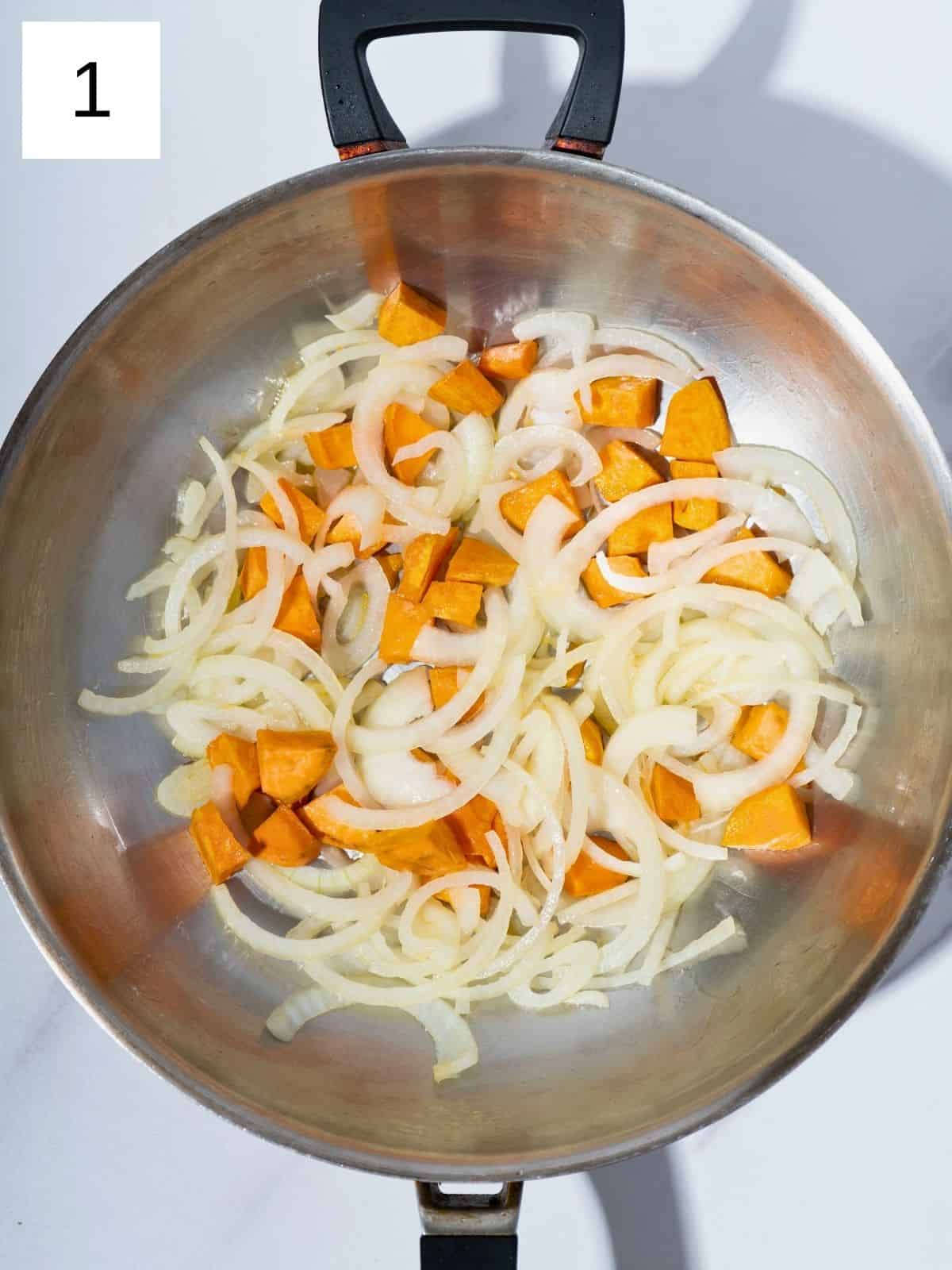
Step 3) Toss in the sliced carrots and bell pepper (or zucchini) and stir-fry for about 5 minutes, or until they begin to soften (image 2).
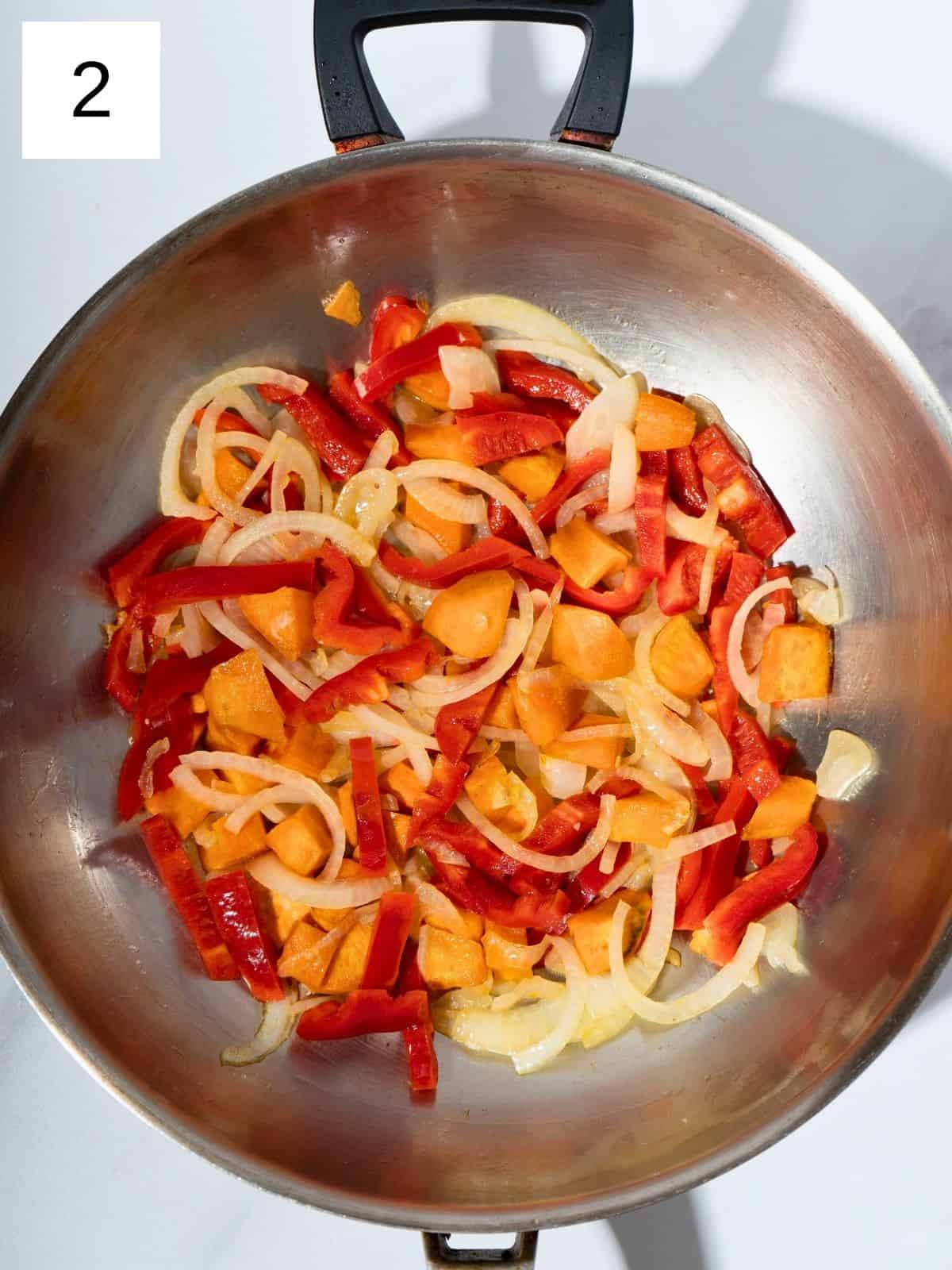
Step 4) Add the minced garlic and ginger to the skillet, stirring well to combine. Cook for an additional 1-2 minutes until fragrant (image 3).
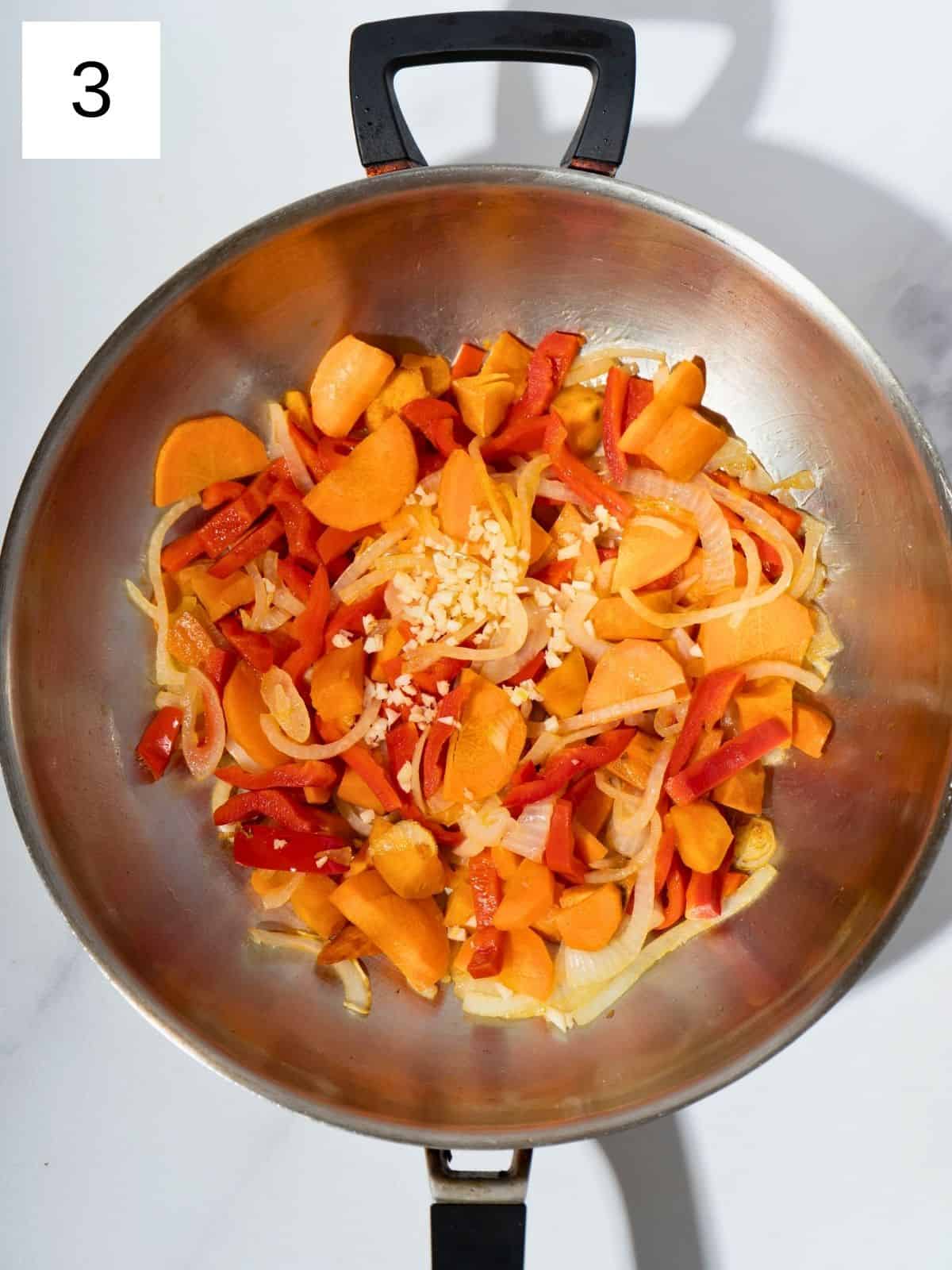
Step 5) Add gochujang, soy sauce, salt and a splash of water and toss to coat everything evenly (image 4).

Step 6) Add the frozen peas and stir well, cooking for another 2-3 minutes until everything is heated through and well combined (image 5).

Step 7) Remove from heat and serve warm, garnished with chopped green onions and sesame seeds.
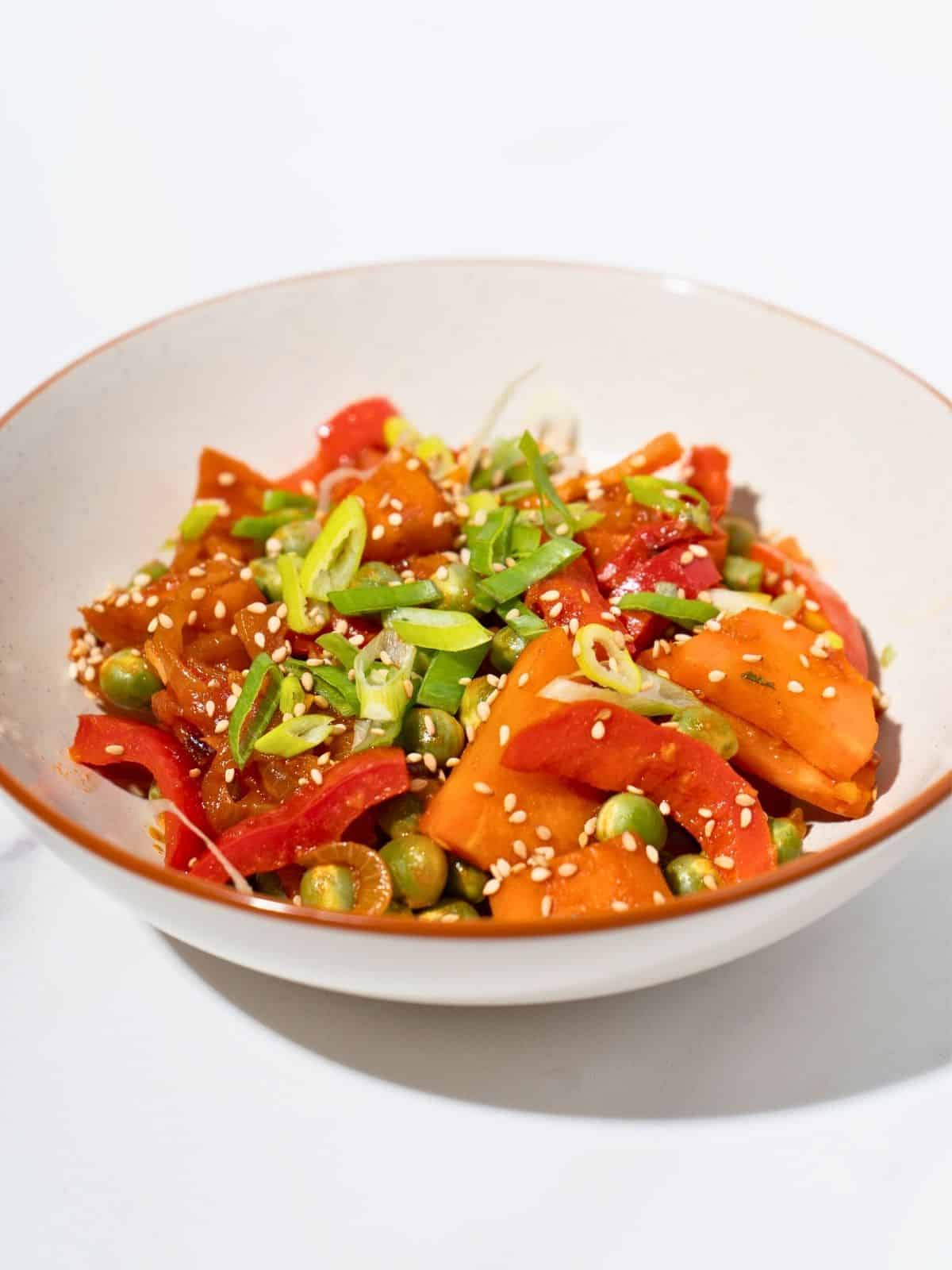
🌱 Variations
- Protein-Packed Stir Fry: Add 8-16 ounces of chopped tofu, chicken, beef, or shrimp for a heartier meal, marinating the protein in 1-2 tablespoons of gochujang before cooking.
- Noodle Stir Fry: Toss in cooked noodles, such as rice noodles or soba, to create a satisfying one-dish meal.
- Seasonal Vegetables: Substitute seasonal veggies like asparagus or zucchini to keep the dish fresh and exciting.
- Sweet and Spicy: Mix in a splash of honey or maple syrup to balance the heat of the gochujang with a touch of sweetness.
- Vegan Option: Use plant-based protein alternatives and ensure any sauces you use are vegan-friendly for a fully plant-based dish.
🥘 Storage and Reheating
Gochujang stir fry vegetables are best served fresh, but leftovers can be stored in an airtight container and refrigerated for up to 3 days. To reheat, simply warm the vegetables in the microwave or in a skillet on the stovetop until heated through. You may need to add a splash of water or oil to prevent them from drying out, if they were refrigerated for awhile.
👨🏻🍳 Expert Notes & Tips
Vegetables: Feel free to mix and match your favorite vegetables! Broccoli, snap peas, bok choy, or mushrooms would also work great in this dish.
Heat Level: Adjust the amount of gochujang or use a prepared mild gochujang sauce based on your spice preference; you can start with less and add more to taste, if you’re less tolerant to hot spice.
Serving Suggestions: This stir fry makes a hearty side or a delicious main dish served over rice, quinoa, or noodles for a complete meal. As a side dish this serves 4 people, as written, though as a main dish over noodles or with a protein it would only serve 2 people.
❓ Other Recipes to Serve With Gochujang Stir Fry Vegetables
🙋 Frequently Asked Questions
Gochujang is a Korean red chili paste made from fermented soybeans, glutinous rice, and salt. It has a unique sweet, spicy, and savory flavor that adds depth to many dishes.
Absolutely! Feel free to customize the stir fry with your favorite vegetables, such as broccoli, snap peas, or zucchini, depending on your preference and what’s in season.
To make the stir fry gluten-free, ensure that the gochujang and any sauces you use are labeled gluten-free, as typically soy sauces contain gluten.
If you prefer a milder flavor, reduce the amount of gochujang used or mix it with a bit of soy sauce or sesame oil to tone down the heat.
Yes! This recipe is naturally vegan-friendly if you use plant-based proteins and ensure that any sauces used are vegan.
📖 Recipe

Gochujang Stir Fry Vegetables
Ingredients
- 1 medium sweet potato about 1 cup or 200g, peeled and diced
- 1 medium onion sliced
- 1 cup carrots 150g (fresh or frozen), sliced
- 1 bell pepper any color (or 1 medium zucchini), sliced
- 2 cloves garlic minced
- 1 teaspoon fresh ginger 5g, minced
- 2 tablespoons gochujang (Korean chili paste) 30g
- 2 tablespoons soy sauce 30 mL
- ½ teaspoon salt
- 1 cup frozen peas 150g
- 2 green onions both whites and greens chopped (for garnish)
- 1 tablespoon sesame seeds 10g, as garnish
- 2 tablespoons sesame oil 30 mL
Instructions
- In a large skillet or wok, heat the sesame oil over medium heat. Once hot, add the diced sweet potato and sauté for about 5 minutes, until it starts to soften.
- Add the sliced onion and continue to cook for another 3 minutes, stirring occasionally, until the onion becomes translucent.
- Toss in the sliced carrots and bell pepper (or zucchini) and stir-fry for about 5 minutes, or until they begin to soften.
- Add the minced garlic and ginger to the skillet, stirring well to combine. Cook for an additional 1-2 minutes until fragrant.
- Add gochujang, soy sauce, salt and a splash of water and toss to coat everything evenly.
- Add the frozen peas and stir well, cooking for another 2-3 minutes until everything is heated through and well combined.
- Remove from heat and serve warm, garnished with chopped green onions and sesame seeds.

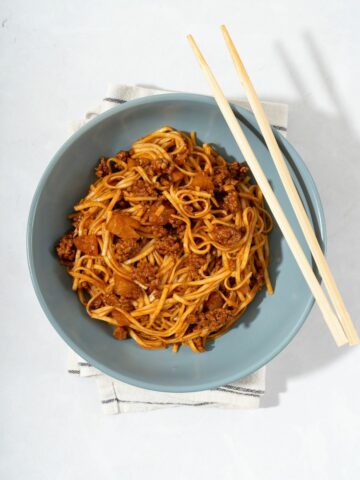
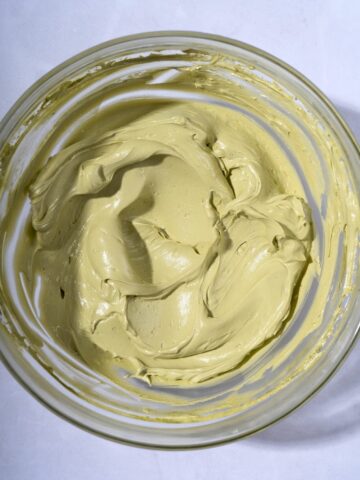
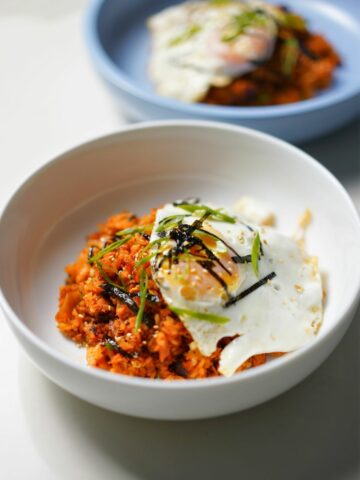
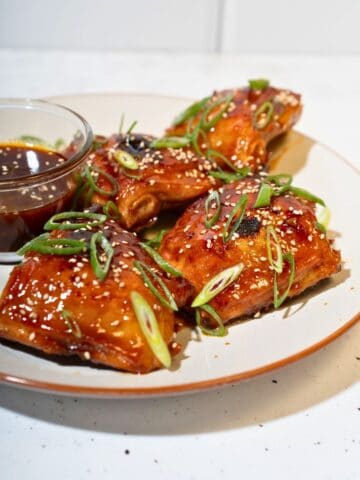

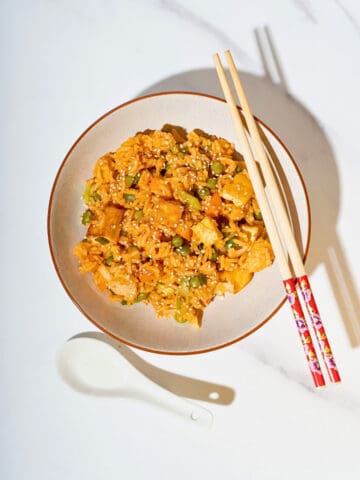
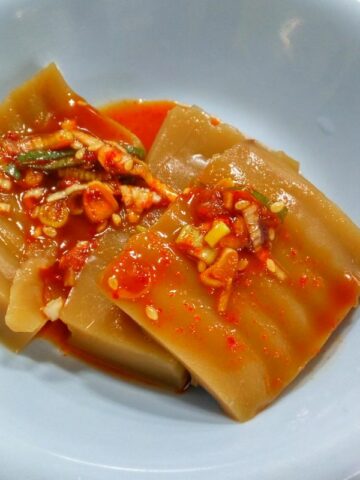
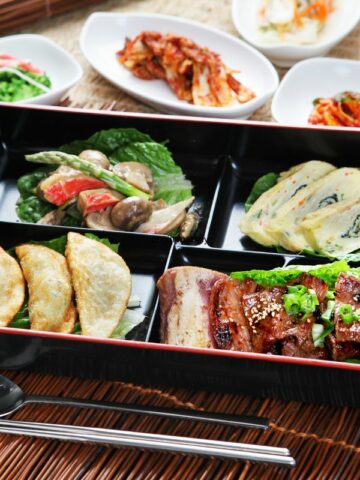
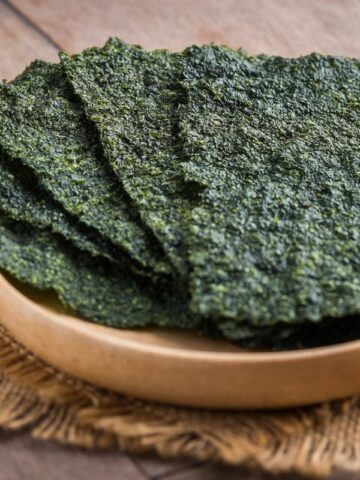
basketball bro says
This recipe is super easy and delicious! The gochujang adds a fantastic flavor, and the instructions are clear. I love how versatile it is with different veggies and proteins. Definitely trying again!
Max says
Thank you, I'm so glad you enjoyed it; it's a favorite at our house, too!
F1 says
This recipe is so easy and delicious! The gochujang adds the perfect balance of sweet and spicy. Love the variation ideas too. Definitely trying this over rice next time.
Max says
Thank you for the kind comment! I'm so glad you enjoyed it~